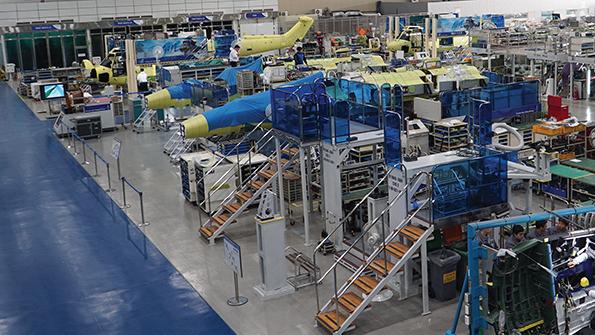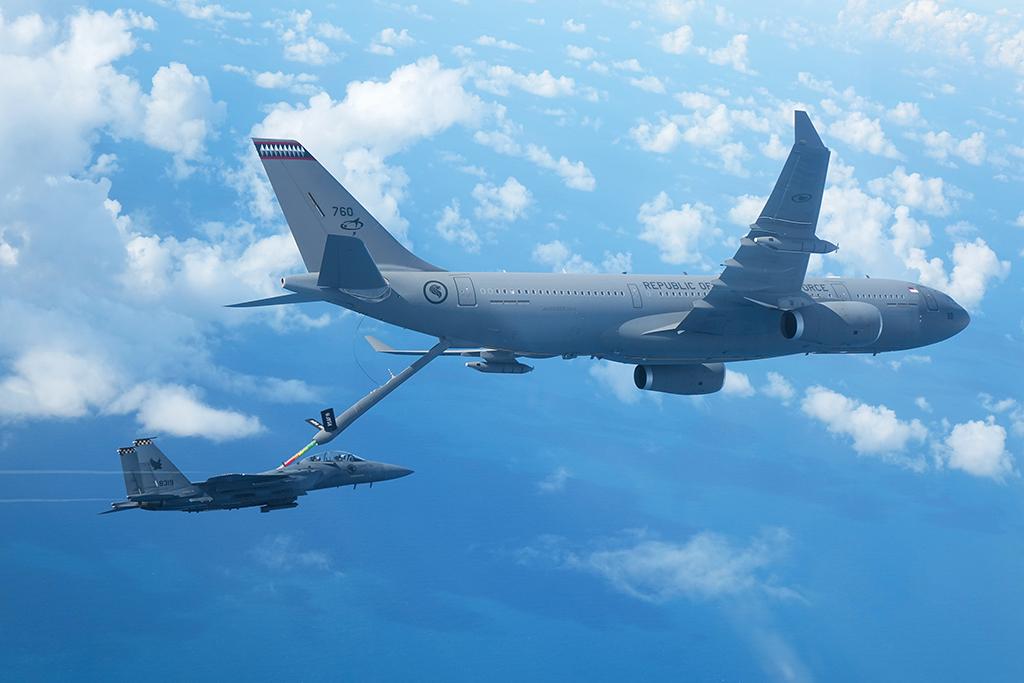
The Asia-Pacific region is home to numerous countries in various stages of economic development and political stability. For most of the 1970s and 1980s, the region saw steady economic growth. However, the 1997 Asian financial crisis derailed defense modernization plans in numerous countries, and some nations have yet to recover. Since that time, the rise of China and the unpredictable North Korean nuclear program have changed the security outlook, prompting some governments to prioritize defense needs over infrastructure, health care and other requirements.
- Industrial powerhouses in China and South Korea produce affordable platforms
- Australia, Singapore and Thailand innovate via partnerships
Even as defense budgets in many nations in Asia are poised for growth, governments there operate with a “more for less” mindset, aiming to deliver as much capability as possible within their own means by tapping in-house industrial ingenuity, looking to off-the-shelf procurement or developing new technologies through collaboration. Here is a look at several such programs:
Industrial Capability
South Korea’s T-50
The Korea Aerospace Industries (KAI) T/FA-50 Golden Eagle jet is arguably one of the few success stories of the Asian aerospace industry. Built initially as an advanced lead-in jet trainer, it has since given some air forces credible combat capabilities with its fighter attack (FA) variant and found success on the export market—with sales to Iraq, the Philippines, Thailand and Indonesia. The Philippines, for example, reentered the jet era with the FA-50 and is using it to gain pilot experience for advanced fighter platforms. Manila spent around $420 million for 12 aircraft in 2014.
One of KAI’s priorities is now upgrading the jet to the “Block 10” standard, which will allow the integration of Lockheed Martin’s AN/AAQ-33 Sniper targeting pod. A “Block 20” is in the works to enable the jet to conduct beyond-visual-range air-to-air missions, carrying munitions such as the Raytheon AIM-120 Amraam. KAI hopes these FA-50 improvements can help it penetrate markets for single-engine fighters.
Future Investment
Boeing’s ATS
The expanse of the Asia-Pacific region and sophisticated air defense systems will eventually require more than a huge fleet of manned platforms to fulfill security requirements. Recognizing this challenge, Australia partnered with Boeing to develop an unmanned and autonomous Airpower Teaming System (ATS) platform as a force multiplier to complement, or even eventually replace, some of the country’s manned Boeing F/A-18F Super Hornets and Lockheed Martin F-35As. Better known as the Loyal Wingman program, it will finally see unmanned units operating in tandem and autonomously with jet aircraft in various mission scenarios.
Australia has invested $31 million for the first three units, and three years after the program was unveiled in February 2019, the first Loyal Wingman aircraft completed its maiden flight, on Feb. 27, 2021. The successful flight of the Loyal Wingman is a proof of concept of the technology, giving Boeing strong standing to compete in the U.S. Air Force Skyborg program. Days after the flight, Canberra pumped in an additional $75 million for three more airframes to support flight tests over the next three years.
Although there is no official unit price for the Loyal Wingman yet, the Royal Australian Air Force program is looking for platforms that cost less than $20 million apiece. The idea is to make the Loyal Wingman affordable and “attritable” for use in high-risk missions, thus reducing the need to deploy costly manned aircraft and pilots.
Low-Risk, Innovative Approach
Singapore Tanker Program
In 1999, the Republic of Singapore Air Force (RSAF) became the first Asia-Pacific service to own and operate boom-equipped tankers, with the introduction of four Boeing KC-135Rs formerly operated by the U.S. Air Force. When they went shopping for a KC-135 replacement in 2016, risk-averse Singapore procurement officers placed their faith in the Airbus A330 Multi-Role Tanker Transport (MRTT)—just as other tanker users were still mulling the unproven Boeing KC-46.

Singapore received the first Airbus A330 MRTT in 2018. The Airbus and Singapore Defense Science and Technology Agency partnership overcame an issue on an F-15 boom flight control law, which caused the boom to swerve too close to the canopy due to the asymmetrical design of the F-15 boom receptacle. The pair also studied reducing the air crew requirement to three from four.
Singapore’s tanking experience and R&D capability makes it the first and only partner in the SMART MRTT project, which demonstrates an auton-omous tanking capability known as A3R, on top of other improvements such as computer-aided troubleshooting. The A3R development gave the RSAF information on high-end tanking technology not yet available to current users.
Touted as a “strategic enabler” by the RSAF, the MRTT tanker-to-tanker feature enables the service to project and recover its fighter assets and personnel to and from anywhere in the world in a single hop.
Even amid the pandemic, the program attained full operational capability in April 2021, within three years of delivery. Autonomous tanking is slated for certification by year-end.
International Collaboration
Thai Gripen
Straddling the Gulf of Thailand and the entrance to the Malacca Strait, the Royal Thai Air Force (RTAF) Wing 7 bears the heavy responsibility of guarding both Thailand’s maritime interests and the kingdom’s southern borders.
The service replaced its Northrop F-5B/Es with 12 Saab JAS-39 C/D Gripen fighters and two Saab 340 Erieye airborne early warning and control aircraft delivered in 2013. The entire program cost Bangkok around $1.1 billion.
The Gripens were the RTAF’s most advanced platform until the service upgraded its F-16As. The multirole fighter was integrated with the Raytheon AIM-120C Amraam, Diehl BGT Defense IRIS-T air-to air-missiles, Saab Bofors RBS-15 anti-ship missile as well as GBU-12-family laser-guided bombs. Saab also helped the Thai service develop a sovereign data link known as Link-T, which Thailand also wants linked to its naval units.
At the 2018 Exercise Pitch Black in Darwin, Australia, the RTAF Gripens achieved the highest reliability rate among fighters from all participating air forces.
Wing 7 pilots are extremely satisfied with the aircraft and hope the fighters can be upgraded to the MS20 standard, although that has been slowed by budgetary constraints. The RTAF has set aside $16.3 million for the MS20 upgrade, $140 million for an Erieye upgrade and integration of Link-T, according to a recent white paper. All were budgeted for fiscal 2021, although it is unclear how COVID-19 might derail these allotments.
Leap Forward
China’s J-10
The People’s Liberation Army Air Force (PLAAF) Chengdu J-10 Vigorous Dragon is China’s vision for a single--engine multirole fighter as its mainstay platform to rival the West’s F-16. Within a decade of its first public appearance in 2008, the J-10 was upgraded, modified and improved over several iterations to meet future airpower requirements. The latest version is the J-10C, featuring an indigenous active, electronically scanned array radar and a diverterless supersonic inlet to improve airflow and radar cross section.
The J-10 was initially powered by the Russian NPO Saturn AL-31 turbofan due to development difficulties of the domestically built Shenyang WS-10. However, it appears that issue has been fixed, and the WS-10 has entered serial production. Notably, a WS-10B testbed demonstrated a high-angle-of-attack routine at the 2018 Zhuhai Airshow with a thrust-vectoring-control nozzle.
The J-10’s capabilities, developed by China’s numerous state-owned companies, arguably surpass some regional fighter counterparts such as Taiwan’s upgraded F-16As, which have only recently commenced delivery.
Aviation Week estimates the PLAAF fleet includes about 55 J-10Bs, 108 J-10Cs and another 41 powered by Chinese WS-10B turbofans. The J-10’s cost is reportedly $40-65 million, around half that of an F-16V.

